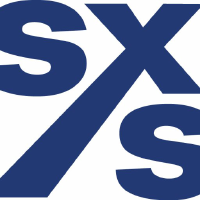|
**Haftungsausschluss: Der Text wurde mit Hilfe einer KI zusammengefasst und übersetzt. Für Aussagen aus dem Originaltext wird keine Haftung übernommen!**
**Zusammenfassung (ca. 500 Wörter)**
Der faire Wert von Spirax Group hat eine leichte Erhöhung erfahren, von £76,87 auf £76,93 pro Aktie. Dies spiegelt eine Verschiebung in den Analystenbewertungen wider, die hauptsächlich auf optimistischem Blick in die langfristigen Wachstumsperspektiven des Unternehmens beruht, während gleichzeitig eine vorsichtige Herangehensweise an unmittelbare Gewinne beibehalten wird.
Mehrere große Brokerages haben ihre Meinungen überarbeitet. UBS hat Spirax Group auf eine „Buy“-Empfehlung angehoben, den Kursziel deutlich von 7.500 GBp auf 10.500 GBp erhöht. UBS’s Erhöhung zeigt Vertrauen im nachhaltigen Wachstum des Unternehmens, bezieht sich auf seinen starken Erfolg, operative Exzellenz und einen gewissen Grad an Transparenz. Umgekehrt hat JPMorgan eine „Neutral“-Bewertung mit nur einer geringfügigen Erhöhung des Kursziels von 7.400 GBp auf 7.500 GBp beibehalten. Dies spiegelt Bedenken hinsichtlich der aktuellen Bewertung und potenzieller kurzfristiger Risiken wider, was darauf hindeutet, dass ein Teil der jüngsten positiven Stimmung bereits im Aktienkurs enthalten ist.
Die wichtigsten Änderungen, die den Fair Value Estimate beeinflussen, sind: ein Anstieg der Abzinsungsrate von 8,82 % auf 9,15 %, ein geringfügiger Anstieg der Umsatzwachstumsübersicht von 4,56 % auf 4,57 % und eine marginale Verbesserung der Nettogewinnmarge von 13,12 % auf 13,13 %. Der erwartete zukünftige P/E-Verhältnis ist ebenfalls moderat gestiegen.
Simply Wall St betont die Bedeutung von „Narrativen“ – von Benutzern erstellten Perspektiven, die finanzielle Daten mit der zugrunde liegenden Geschichte eines Unternehmens verbinden. Diese Narrative kombinieren Prognosen, finanzielle Ziele und Fair-Value-Schätzungen in einen klaren Entscheidungsrahmen. Sie sind dynamisch und aktualisieren sich automatisch, wenn neue Informationen über die Simply Wall St Community verfügbar werden.
Der aktuelle Fokus liegt auf mehreren Schlüsselfaktoren, die Spirax Group antreiben: steigende Nachfrage nach Dekarbonisierung, Energieoptimierung und digitalen Lösungen, insbesondere in Asien. Der strategische Wandel des Unternehmens hin zu höherwertigen Dienstleistungen, zusammen mit operativer Neuordnung und Innovation, tragen ebenfalls dazu bei.
Es werden jedoch auch Risiken hervorgehoben, darunter die Abhängigkeit von reifen Märkten, der Zeitpunkt der Technologieübergänge und potenzielle Auswirkungen von Währungsschwankungen.
Simply Wall St betont, dass ihre Analyse auf historischen Daten und Analystenprognosen basiert und eine unvoreingenommene Methodik verwendet. Es wird klar angegeben, dass dies keine Finanzberatung ist und dass ihre Analyse nicht auf individuelle Anlegerziele oder Umstände zugeschnitten ist. Sie konzentrieren sich auf langfristige, fundamentale Datenanalyse und erkennen an, dass sie möglicherweise die neuesten, preisempfindlichen Ankündigungen nicht berücksichtigen.
---
Do you need any specific aspects of the translation adjusted or expanded upon? Would you like me to focus on a particular element of the text? |



